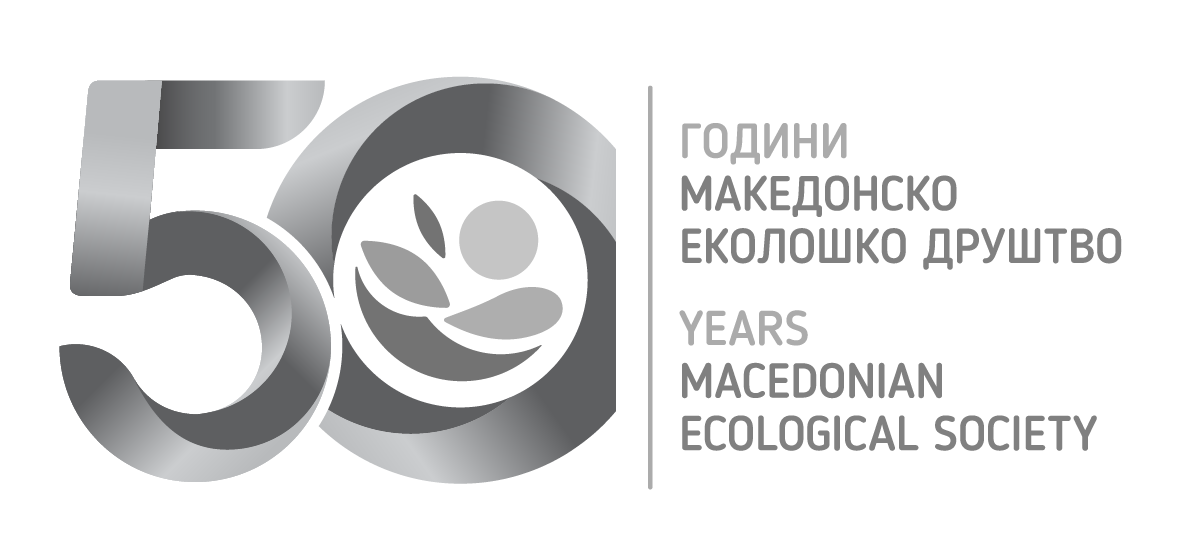
October 15th – 18th 2022, Ohrid, North Macedonia
Macedonian Ecological Society invites you to attend the 6th Congress of Ecologists of North Macedonia, with international participation.
Complete information about the Congress is available at www.congress.mes.org.mk, where you can also find the first announcement.
Congress sections
Populations, Communities and Ecosystems
Hydrobiology, Water Management and Monitoring
Biodiversity and Conservation Biology
Forestry and Agriculture
Natural Resources Management
Air, Water and Soil Pollution
Environmental Change
Ecological Education
Guidelines for organizing presentations and papers
Important note: Although the Registration form allows presenters to select a preferred type of presentation (speech or poster), the final decision on the presentation type will be made by the scientific board, of which the authors of their conclusion will be informed in due time (posters are the preferred option). This decision aims to dilute the dense congress programme experienced at previous congresses.
Speeches: You will have maximum of 15 minutes to present your speech. The Scientific Board will invite one presenter per thematic section to expand their presentation to 20-25 minutes, as an introductory speech. Please organize the presentations in Microsoft PowerPoint or LibreOffice Impress. Allow for two introductory slides, clear presentation of the methodology, results and discussion, and up to two slides for the conclusions. Aim for no more than 20 slides per presentation. Avoid presentations and slides that contain too much text graphical images and photographs make the visual experience of the audience richer.
Before the sections’ start, you will be asked to transfer your presentations to the computers in the halls, therefore arrive at the congress venue at least one hour before the thematic section begins.
Posters: Prepare your posters in portrait layout, dimensions 110 (height) x 90 (width) cm. Avoid too much text, but include the necessary information on methodology, results and conclusions. If you want to include Congress’ logo, you can download all versions here.
Papers: If you submit your presentation for publication as a paper in either the Congress proceedings or the Macedonian Journal of Ecology and Environment (also published by the MES, with an international scientific board), please follow these guidelines:
Organisation:
The text (including the title page, abstract, keywords and tables) should be provided in one file. The manuscript should be prepared using Microsoft Office Word or Libre Office Writer. Graphics, i.e. figures, schemes, etc. should be submitted as separate files. The file name should be descriptive for the graphic. The manuscripts should be typewrit-ten using double spacing and ca. 60 characters per line and 30 lines per page. The document should be with wide margins (3 cm for all four margins). Turn the hyphenation option off. Please use Sentence case for all elements of the text. The title should be short, informative and contain the main message of the article. The scientific name of the group (where appropriate) might be provided in brackets (e.g. Ecology of Carabus violaceus (Coleoptera, Carabidae)). A short running title (less than 40 characters, including spaces) should also be provided. The abstract and keywords should follow. Articles should have an Abstract that not exceed 300 words. It should contain the purpose, basic procedures, main findings and principal conclusions of the study. Three to ten keywords should be supplied for the purposes of indexing. Macedonian authors should submit abstract and keywords both in English and Macedonian language. For foreign authors, the Editorial Board will provide translation of the title, the abstract and the key-words into Macedonian. Papers will usually include Introduction, Material and Methods, Results, Discussion, Acknowledgements, References and Figure/Table Captions.
Introduction
This section should include sufficient background information to set the work in context. The aims of the manuscript should be clearly stated. The introduction should not contain neither findings nor conclusions.
Materials and methods
This should be concise but provide sufficient detail to allow the work to be repeated by other researchers. The source of material should be given in detail, where possible.
Results
Results should be presented in a logical sequence in the text, tables and figures; repetitive presentation of the same data in different forms should be avoided. The Results should not contain material appropriate to the Discussion.
Discussion
This should consider the results in relation to any hypotheses advanced in the Introduction and place the study in the context of other work. Only in exceptional cases should the Results and Discussion sections be combined.
Acknowledgements
The source of financial grants and other funding should be acknowledged, including a frank declaration of the authors’ industrial links and affiliations. The contribution of colleagues or institutions should also be acknowledged.
References
In the text, give the author’s name followed by the year in parentheses: Levkov (2009). If there are two authors, use ‘&’: Levkov & Williams (2006); same if cited within parentheses: (Levkov & Williams 2006). When reference is made to a work by three or more authors, the first name followed by “et al.” should be used: Round et al. (1990). If several references by the same author(s) and from the same year are cited, a, b, c etc. should be put after the year of publication (Levkov et al. 2006a, 2006b). Within parentheses, groups of references should be listed in chronological order.
In the list of References:
The list of references should be sorted in alphabetical order. Cite the names of all authors when there are seven or fewer, when there are more than seven cite the first three and add “et al”. Complete names of journals (not abbreviations) are required. References should be listed in the following form:
Journals:
Levkov, Z. & Williams, D. M. (2006). Two new species of Diatoma from Lakes Ohrid and Prespa, Macedonia. Diatom Research, 21: 281-296.
Dittmar, C., Zech, W., Elling, W. (2003). Growth variations of Common beech (Fagus sylvatica L.) under different climatic and environmental conditions in Europe – a dendroecological study. Forest Ecology and Management, 173: 63-78.

